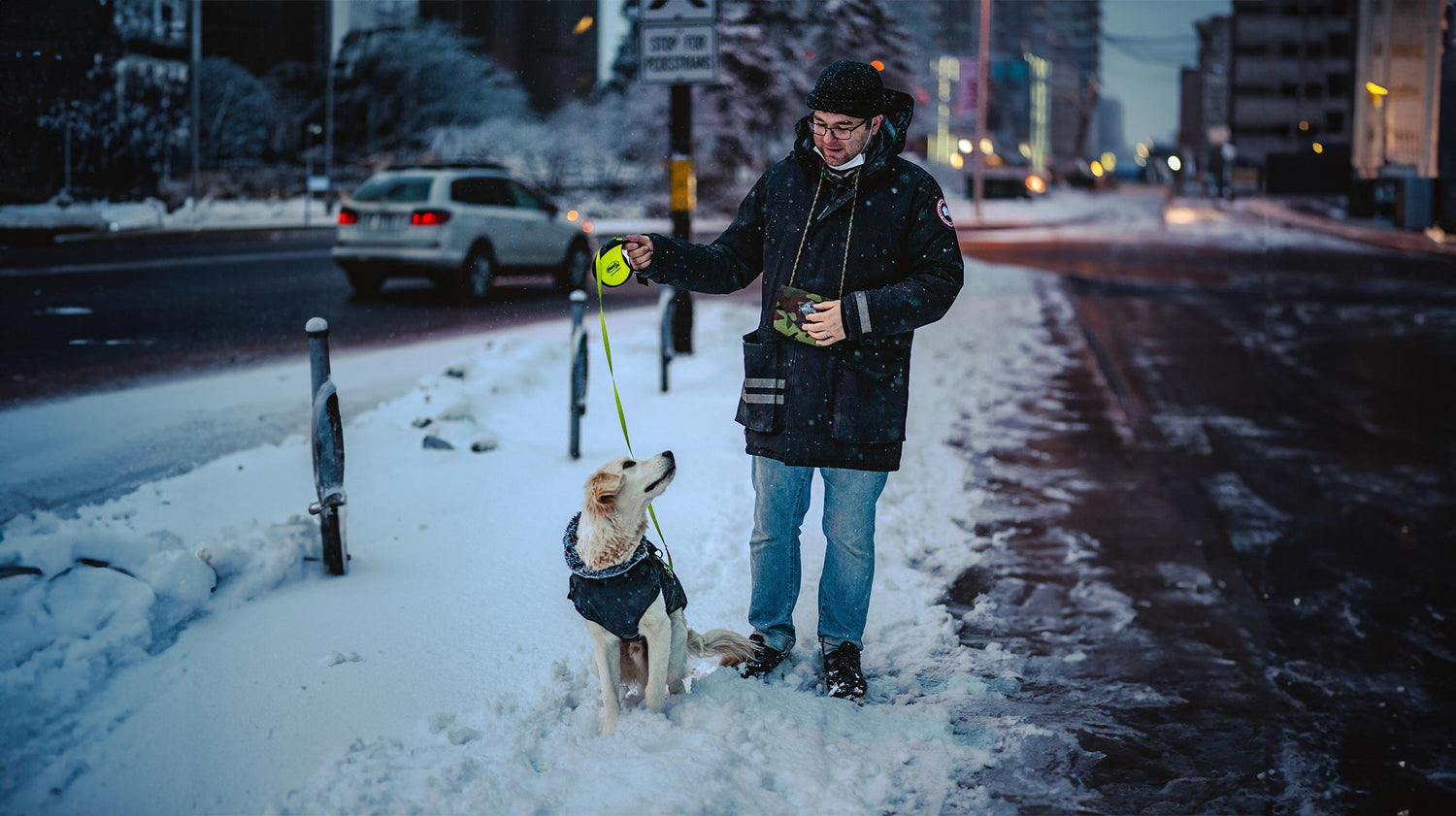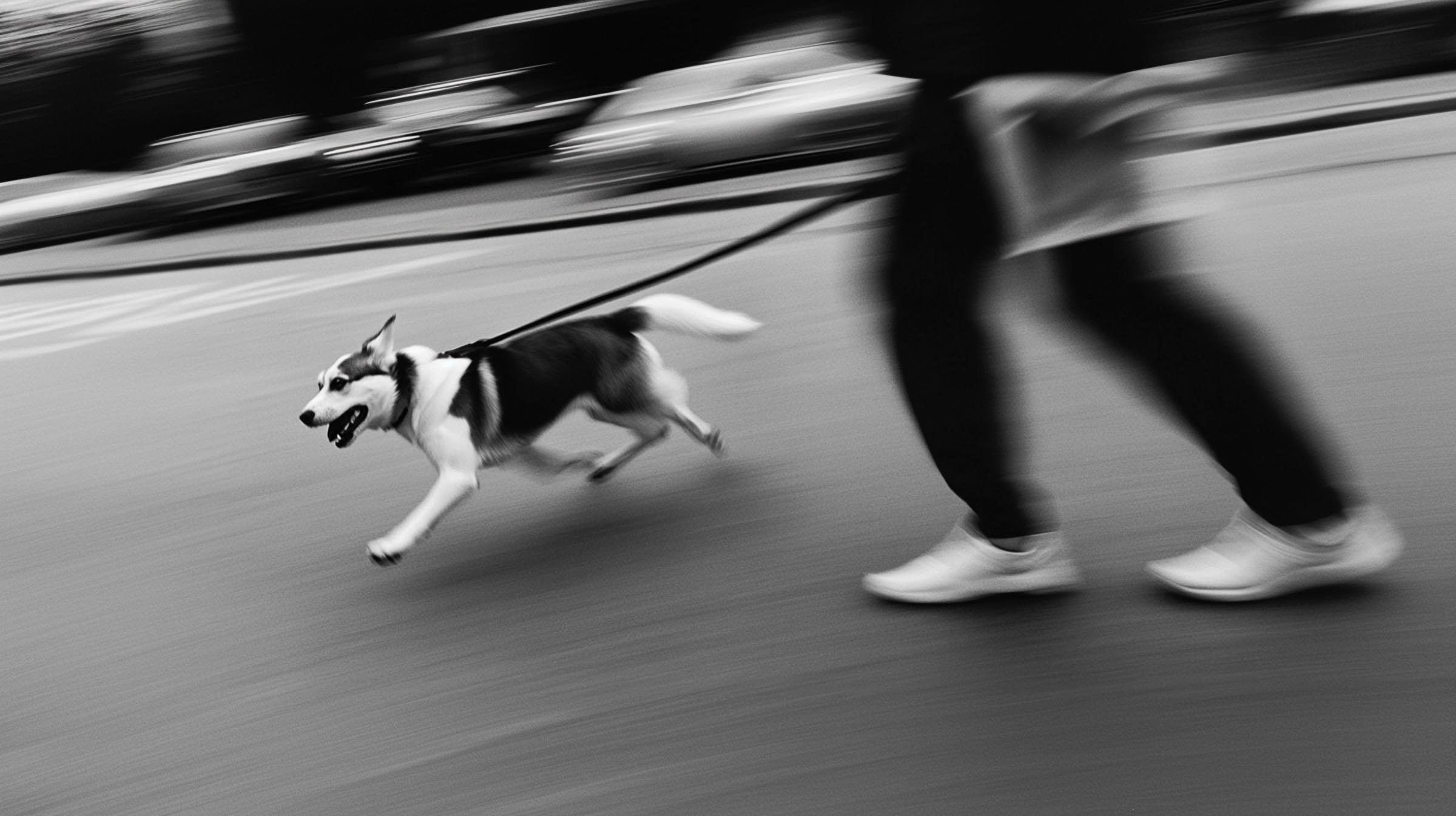Retractable leashes are a popular choice for dog owners who want to give their pets more freedom to explore while staying connected. These leashes, which can extend up to 10 metres or 30 feet, allow dogs to roam farther than standard leashes. However, despite their convenience, retractable leashes come with several risks that can endanger both dogs and their handlers. From mechanical failures and injury risks to reinforcing bad leash manners, the drawbacks of these leashes often outweigh their advantages. In this guide, we will explore the pros and cons of retractable leashes, and why long leashes or fixed-length leashes may be a safer option for most dog owners.
Summary
- Mechanical Failures: Retractable leashes can snap or jam, leaving you with no control over your dog when it’s needed most.
- Injury Risks: Both dogs and handlers are at risk of burns, cuts, and even serious injuries like neck damage or amputations.
- Poor Leash Training: Retractable leashes encourage pulling and make it harder to teach dogs to walk calmly by their handler.
- Limited Use: They are best suited for well-trained dogs in open, low-traffic areas; however, they are risky in busy environments.
- Long Leash Alternative: Long leash offer a safer way to give your dog freedom without the risk of mechanical failure, although retractable leashes can be more practical for managing slack.
The Mechanics of Retractable Leashes Are Prone to Failure
Retractable leashes may seem convenient, but their design leaves them vulnerable to mechanical failure. These leashes use a spring-loaded spool inside a plastic handle to extend and retract a thin cord or tape, which can malfunction when least expected. For larger or more energetic dogs, the risk of failure increases significantly.
- Cord Weakness: Cords can fray and snap, particularly with strong, sudden pulls from larger dogs.
- Locking Mechanism Issues: Locking buttons often break or jam, leaving handlers unable to control the leash effectively.
- Spring Failures: Internal springs that control the leash’s retraction lose tension over time, causing the leash to malfunction.
- Environmental Wear: Dirt, moisture, and regular wear degrade the internal components and mechanisms over time, making failure more likely.
Injuries to Dogs and Owners
Retractable leashes pose serious risks of injury, both to dogs and their handlers. The thin cord can cause painful injuries when it wraps around limbs or fingers, and the sudden jerks that occur when dogs hit the leash’s limit can lead to spinal or neck damage in pets.
- Cord Injuries: The thin leash can cause rope burns, cuts, and even amputations if it tightens around body parts.
- Sudden Impact on Dogs: When a dog reaches the end of a fully extended leash, the sudden stop can cause neck or spinal injuries, especially if the dog is wearing a collar.
- Dangerous Snapbacks: If the leash breaks, the cord can snap back toward the handler, potentially causing welts or even eye injuries.
Lack of Control
A major downside of retractable leashes is the reduced control they provide, especially in high-risk environments such as busy streets or crowded parks. The leash’s extended length can prevent quick reactions to sudden dangers or distractions, putting both the dog and others at risk.
- Delayed Response: Retractable leashes do not provide immediate feedback, causing a lag in control when the leash needs to be locked.
- Bulky Handle Issues: The large handle can easily slip out of an owner's hand, especially in unexpected situations.
- Limited Reaction Time: In high-traffic areas, dogs may be too far ahead to pull back quickly in the event of an emergency, increasing the risk of accidents.
In busy environments, always lock the retractable leash to keep the dog close. Avoid fully extending the leash in areas with distractions or potential hazards to ensure you can respond quickly if needed.
Retractable Leashes Reinforce Pulling Behaviour
Retractable leashes often encourage undesirable behaviours in dogs, such as pulling. When the leash extends in response to pulling, dogs learn that this action gives them more freedom, reinforcing poor leash manners and making it harder to train them to walk calmly by their owner’s side.
- Rewarding Pulling: Dogs quickly learn that pulling on the leash results in it extending, encouraging them to continue this behaviour.
- Frustration from Sudden Stops: When the leash is locked after they’ve pulled, dogs may become frustrated, which can lead to more pulling or reactive behaviours.
- Inconsistent Boundaries: Retractable leashes provide inconsistent boundaries, making it harder for dogs to learn how far they are allowed to walk.
Tip: Use a standard fixed-length leash during training sessions. This provides consistent feedback and reinforces the importance of walking calmly beside the handler, rather than pulling ahead.
User Error Contributes to Problems
One of the most common issues with retractable leashes is user error. Many handlers forget to lock the leash when needed, allowing their dog too much freedom in high-risk areas like streets or parks. Additionally, these leashes are often used with untrained dogs, exacerbating behavioural problems and increasing the likelihood of accidents.
- Failure to Lock the Leash: Handlers may forget to lock the leash in dangerous areas, allowing dogs to roam too far ahead.
- Lack of Attention: Retractable leashes require constant attention and management, which many owners fail to maintain throughout the walk.
- Inappropriate Use with Untrained Dogs: Retractable leashes are not suitable for dogs who have not been properly leash-trained, as they reinforce bad behaviours like pulling and lunging.
Long Leashes Can Be Safer
Long leashes are often recommended as a safer alternative to retractable leashes for giving dogs more freedom while maintaining control. They are typically made from durable materials like nylon, and they provide dogs with the ability to explore a fixed boundary with less risks than retractable leashes.
- Consistent Boundaries: Long leashes provide a fixed length that helps dogs understand their limits, which is particularly useful for recall training or allowing dogs to roam safely in open areas.
- Durability: Long leashes are generally sturdier than retractable leashes, making them less prone to mechanical failure and fraying. They are ideal for handling larger or more energetic dogs.
- Reduced Risk of Injury: Because long leashes don't retract with tension, they eliminate the risk of sudden jerks, which can cause injury to a dog’s neck or spine.
However, retractable leashes can offer a practical advantage when doing long-line work. For example, retractable leashes automatically adjust the length and minimise the need for the handler to manage extra line. This makes retractable leashes less likely to snag on bushes or get caught on obstacles, offering smoother handling in certain environments.
When choosing between a long leash and a retractable leash, both the environment and your dog’s training level are key factors. The combination of a well-trained dog and the automatic slack management of a retractable leash makes it particularly useful in open areas or trails, where tangling hazards might otherwise be an issue with a traditional long leash. However, for dogs still in training or in situations where more consistent control is needed, long leashes remain the safer choice.
When Is It Safe to Use a Retractable Leash?
Although retractable leashes are not recommended for most situations, there are specific environments where they can be used safely. In open, low-traffic areas with clear visibility, a retractable leash can allow a well-trained dog some extra freedom while still keeping them securely attached to their handler.
- Use with Well-Trained Dogs: Only use a retractable leash with a dog that responds well to commands and is not prone to pulling or lunging.
- Low-Traffic Environments: Retractable leashes are best suited for open fields or wide hiking trails with minimal distractions.
- Frequent Locking: Even in safe areas, it’s important to frequently lock the leash to prevent the dog from moving too far ahead or encountering unexpected dangers.
Conclusion
While retractable leashes provide convenience and flexibility, they come with significant risks. Mechanical failures, such as snapped cords or broken locks, are common and can leave owners with little control in critical moments. Injuries to both dogs and handlers are frequent, including burns, cuts, and neck injuries in pets.
Retractable leashes can also encourage bad habits like pulling, making them less ideal for leash training. Although they offer benefits, particularly for managing slack in open areas, safer alternatives like standard leashes or long leashes provide better control, reduce injury risks, and are more reliable overall.
In most cases, long leashes or fixed-length leashes are a better, safer choice for dog walking.




Leave a comment
This site is protected by hCaptcha and the hCaptcha Privacy Policy and Terms of Service apply.